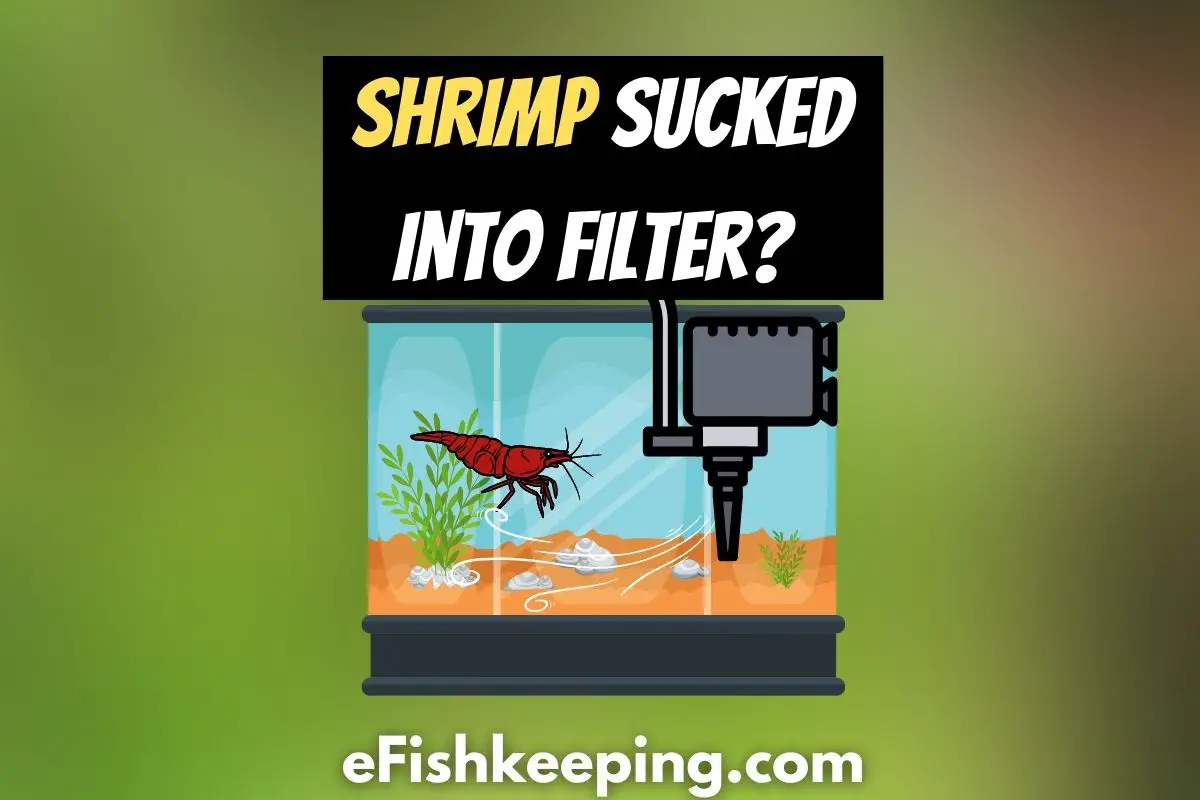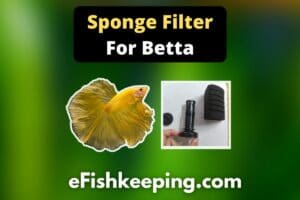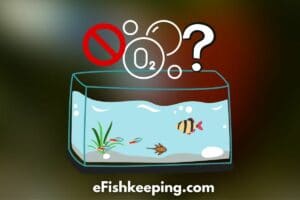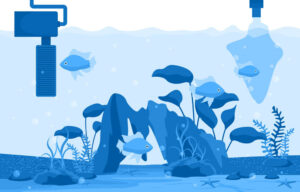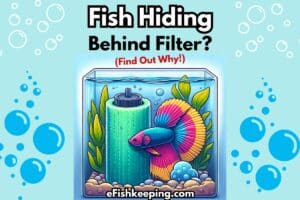Do you have a nice tank with cute little shrimps? Then you might get worried at times, mainly because of the filter.
But do the shrimp really get sucked into the filter? And if so, can they survive in a filter? What is the way to keep shrimp from getting sucked into the filters? I will discuss all these in this article. So make sure to read till the end. Let’s get started!
Can Shrimp Get Sucked Into Filter?
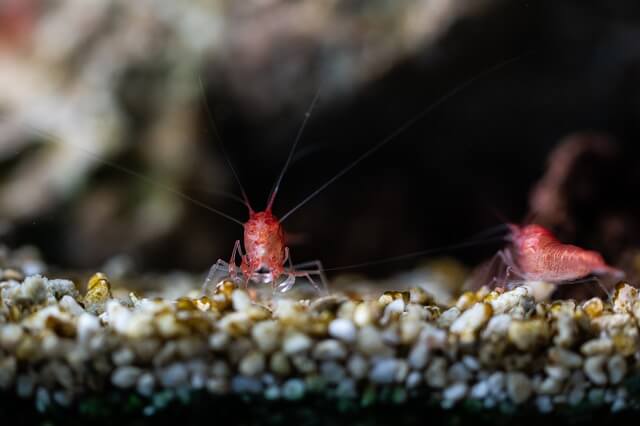
Shrimp can get sucked into the filter, specifically the baby shrimps, and the shrimps smaller than the filter intake. However, if you cover the filter’s intake with some mesh or pre-filter, they can’t get inside the filter.
So, while cleaning the filter media, don’t get surprised to find the tiny shrimps inside your filter. But the questions come, why do they get sucked into the filter? Do they remain alive there? Let’s see!
Why Do Shrimp Get Sucked Into Filters?
The most common reason a shrimp would get sucked in filters is their relatively small size compared to the filter’s intake.
Shrimps are opportunistic omnivores, and in the wild, they spend most of their time eating anything that falls on the water bed.
In the larval stages, the shrimp can’t be picky about where they are taken with the water flow. Hence, they will eat just anything that floats with them.
As they grow, they eat things like algae, worms, dead and living plants, etc.
In addition, shrimps are quite good at swimming in tanks. Although shrimps mainly move around by walking, they can also swim in the aquarium, which is different from what we usually see in the case of fish.
Shrimps can swim backwards, and they move backwards by using the muscles in their abdomen and their tail.
So with good swimming skills and the behavior of eating almost anything that doesn’t eat them first, you can’t stop them from exploring different parts of your tank (including the filters). And when your filter is not yet shrimp-proof, they can get sucked in it.
Can Shrimp Survive In Filters?
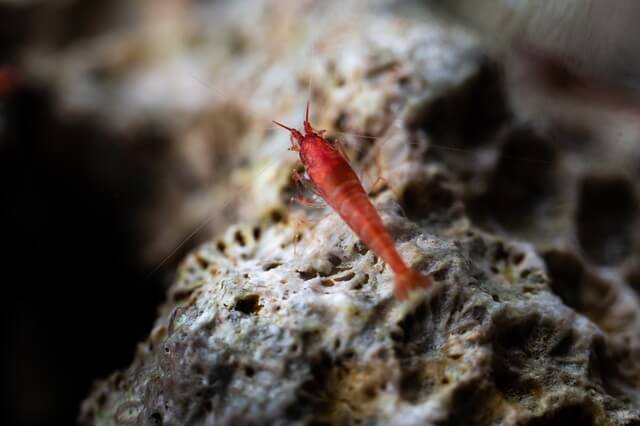
As a general rule, shrimps can survive in filters because there is enough nutrient material and water flow for them to thrive. However, leaving your shrimps for a long time inside a filter is not good because it is an enclosed place with no light.
Shrimps are crustaceans, and most crustaceans are (free-living) aquatic organisms. The crustaceans also use the gills for breathing oxygen.
Shrimps are found in lakes, rivers, and oceans, and they are generally bottom dwellers.
Whichever habitat you choose for shrimp, there should be a good source of water and food.
Assuming that water is already flowing through the filter, there is no question regarding that. In terms of food sources, shrimps eat things like leftover fish food, algae, other dead shrimps, and any type of decaying organic matter.
Since the filter is where all the wastes of the aquarium get collected, there’s a lot for them to thrive on.
So basically, inside the filter, the shrimps get both food and water source. So they can live there. But is that a good place for them to live? No!
The place inside the filter is a very confined and enclosed region. So there won’t be enough space for your shrimp to move around.
Also, there won’t be any light, and it will be a dark place. It is important to remember that light is a crucial biological factor for shrimps.
How To Prevent Shrimp From Getting Sucked Into Filter?
To prevent shrimp from getting sucked into the filter, use a filter guard (mesh) or a pre-filter that acts as a barrier between the filter and shrimps. Also, you can use the undergravel filtration system or the sponge filter in which there is very less to no chance of shrimp getting sucked.
Let’s discuss each one of the ways one by one in more detail:
#1. Apply A Filter Guard

Check This Here (on Amazon)
So as you can see above, you can buy such stainless steel mesh that will act as a filter guard. This can prevent your shrimp or small fish from getting inside the filter.
Also, cleaning this mesh filter guard is also pretty easy. You can just remove the dirt and debris by rubbing with your hand. Or, you can also use a soft brush or something like a toothbrush.
#2. Use A Pre-Filter

Check This Here (on Amazon)
Apart from the filter guards, pre-filters are also another thing you can use to make your filter shrimp-proof.
The pre-filters are high-quality foam sponges that you can attach to the intake portion of the filter. And thus, you can prevent the shrimp from getting sucked inside!
The pre-filter creates a barrier between the filter’s intake outlet and the shrimps in your tank.
As a general rule of thumb, these pre-filters won’t cause a significant reduction in the water flow to the filter because the holes are sufficiently large enough to let the water pass through.
I highly recommend you to watch this video to learn more about pre-filters:
#3. Install A Sponge Filter

Check This Here (on Amazon)
Sponge filters are a great addition to your aquariums. (I have been using them in my two fish tanks for quite some time now, so I can recommend them without any doubt.)
The sponge filters working is pretty simple. There are not a lot of mechanisms and parts involved. To run a sponge filter, you need mainly three things.
- An Air Pump
- An Air Line Tube
- The Sponge Filter
As the air pump pushes the air into the hollow cavity of the sponge filter through the airline tube, bubbles rise up. This, in turn, lets the water get sucked in through the sponge walls.
To learn exactly how a sponge filter works, I highly encourage you to watch this video:
Since there is almost no way from where your shrimp can enter into the filter system, it therefore highly reduces the chances of shrimp getting sucked into it.
I know you might be thinking about the top outlet portion of the sponge filter. It is the place from where those bubbles rise up. So there is very little to no chance your shrimp would get inside it.
#4. Install An Undergravel Filtration System
Do you want to solve the problem of shrimps getting sucked into the filter? But you don’t want to cover the filter intake portion? Then using an undergravel filtration system is another best option to prevent shrimp from getting inside your filter.
An undergravel filtration system consists of a plastic plate that is placed at the bottom of the tank.
And as you can understand from the name “Undergravel filter,” the plate is placed beneath the substrate layer. The plate of the undergravel filter has holes or slots, and over it, the aquarium gravel is arranged. (Therefore, no worries about your shrimp getting sucked in!)

Check This Here (on Amazon)
From each back corner of the plate, a lift tube extends up to the top part of the tank.
The water under the plate passes through the lift tube and is pulled upwards. An air pump or powerhead system is used to help in pulling the water up. As the water naturally passes through the gravel bed and subsequently the plate, it gets filtered.
If you are a bit familiar with the nitrogen cycle, you are already aware of the importance of bacteria in the aquarium system.
In an undergravel filtration system, the gravels provide a great surface area for the bacteria to thrive.
Moreover, a steady movement of water through the bacterial colonies ensures enough oxygen availability for them.
So, as the water passes through the gravel bed, bacteria utilize the oxygen from the water and help in metabolizing nitrite and ammonia.
Along with biological filtration, the undergravel filter also functions like a mechanical filter.
(Since the gravel layer traps the solids and debris as they pass through it, the undergravel filtration system also performs the role of a mechanical filter.)
There are a few drawbacks associated with these undergravel filters:
As the wastes and debris get collected in the gaps of the gravel beds, over time, less water will pass through them. As a result, a lesser flow of oxygenated water through the bacteria will happen, and this will, in turn, reduce the efficacy of the biological filtration with time.
As a solution, you can use a separate mechanical filter to reduce the settling of solid particles in the gravel bed. You can also perform gravel cleaning while doing the water changes to maintain the system’s efficacy.

Check This Here (on Amazon)
Another problem with this filtration system is that it doesn’t act as a chemical aquarium filter.
Although in certain undergravel filters, you can find the small cartridges of activated carbon granules (located at the top portion of the lift tubes), you should remove them. This is because the carbon in the cartridges doesn’t last long, and it also reduces the water flow through the filter.
Who Should Use An Undergravel Filter?
The undergravel filtration system is best for small planted tanks since the decaying waste under the substrate layer can act as a nutrient for the plants.
Also, if you are looking for something like an air stone in your tank, you can use the undergravel filter because they act in a similar way.
The undergravel filters are cheap and are available in different sizes that can fit well in almost all types of standard tanks from 10-55 gallons.
What To Do If A Shrimp Gets Sucked Into The Filter?
If a shrimp gets sucked into the filter, first unplug the filter and then gently disassemble the filter parts. If the rescued shrimp is found to be injured or ill, you can keep it in a separate quarantine tank for some time where it can feel relieved and doesn’t get bullied.
Putting the rescued shrimp in a separate tank will allow you to monitor it properly.
In case it has got some disease, you can treat it accordingly. Along with that, you are also minimizing the risk of spreading the infection to other tank mates.
Final Thoughts
In short, shrimp can get sucked inside the filter, especially if they are of small size. You can either make your filter shrimp-proof by attaching filter guards (mesh) or pre-filters as prevention. Alternatively, you can replace your filtration system with an undergravel filter or a sponge filter.
So that’s it! I hope this guide has given you complete knowledge about shrimp getting sucked into your tank and how you can prevent it. Thanks!
Read More: Do Bamboo Shrimp Play Dead?
Hi! I’m Praveen Ghoshal, the founder of eFishkeeping.com. Inspired by my Dad, I got interested in fishkeeping when I was a kid. Since then, I have been involved with this hobby. Currently, I have 3 fish tanks at our home, and I enjoy this hobby with my full family. Read more about me here.

